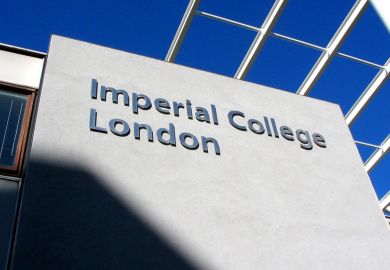Many US universities appear to be hurting themselves in the competition for international students by routinely failing to properly count data showing how well they are already doing.
The miscounting and undercounting by US colleges in areas such as the national origins of faculty seems to be part of an overall lack of appreciation for cross-border diversity, experts told the annual assembly of the Association of International Education Administrators.
One of them, Randy Kluver of Oklahoma State University, described his experience in asking internally for key data on international performance when he began his job as dean of the School of Global Studies and Partnerships.
“I was met with lots and lots of blank stares,” Dr Kluver told the AIEA conference in San Francisco.
Placing proper emphasis on internationalisation – including greater participation by US nationals in study abroad programmes, and expanded enrolment of foreign students and recruitment of foreign faculty – can require dedicated attention to reward-based structures, other speakers said.
Grant Chapman, the associate provost for international programmes at Kansas State University, described his institution’s 15-year quest to become recognised as a top 50 public research university by 2025. Kansas State has recognised that it cannot accomplish this without boosting its international profile, Mr Chapman said.
To that end, he said, the university has set numerical targets for increasing the number of institutional partnerships it has with foreign campuses, and increasing the percentage of undergraduates who gain some kind of international experience.
The University of Nebraska Medical Center and the University of Nebraska Omaha make such goals happen by tying them directly to professional advancement, said Jane Meza, the associate vice-chancellor for global engagement for the two campuses.
“If you’re a senior leader and you’ve got all zeroes in your metrics,” Professor Meza said, “you’re not getting a raise that year, for sure.”
Data systems can also help administrators and faculty work within their own institution to find international partners, said Sukant Misra, the vice-provost for international affairs at Texas Tech University.
Texas Tech has a system that allows staff seeking a partner with expertise in a particular geographic area or a country or language to find faculty already on campus who can help, Professor Misra said.
Getting such data right is essential, Dr Kluver said. He lamented discovering that Oklahoma State had been failing to do that for years. In response to one major rankings survey, he said, Oklahoma State reported having only 32 “international” faculty. Dr Kluver said that he checked and found more than that in the chemical engineering department alone. The problem, he discovered, lay in definitions, with overly cautious university technicians relying only on visa status as the measure.
“If you misreport your data by a factor of 10, 15 or 20, you’re going to get killed” in global rankings, Dr Kluver said.
And that translates pretty directly into overall institutional success, Dr Kluver said. He described discussing the value of rankings with Oklahoma State’s vice-president of enrolment management, who told him not to worry so much about getting proper data for rankings questionnaires.
“He said: ‘You know what – no student on a campus visit ever asked me how we rank,’” Dr Kluver said. “And I said, ‘They’re never going to ask you that when they come on a campus visit, because they asked before they got here – if you don’t rank high enough, they won’t show up on the campus visit.’”




